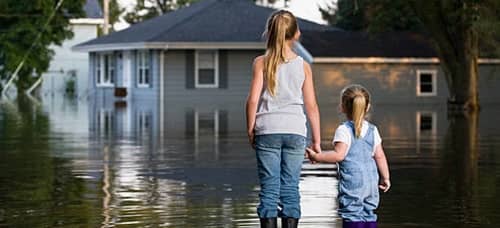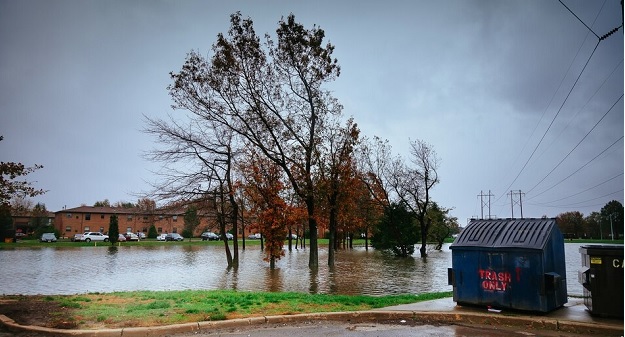Flood insurance is a special kind that saves landlords and renters from losing money because of floods. Regular homeowner’s insurance doesn’t usually cover damage from flooding. However, flood insurance is made to pay for fixing or rebuilding property harmed by flooding. Read on to learn about flood insurance: what it is, how it works, and how much it costs.
What Is Flood Insurance?
It is a special kind of insurance that covers people who own homes, rent homes, or run businesses from losing money because of floods. These funds are meant to cover the price of fixing or replacing property that has been flooded. Standard home insurance doesn’t usually cover flood damage, but flood insurance does. It covers damage to houses and their belongings caused by floods.
You can get flood insurance from the Federal Emergency Management Agency (FEMA) and private providers. FEMA directs the National Flood Insurance Program (NFIP), which covers areas in the NFIP. Private insurance companies also offer flood insurance, and their limits and coverage choices are often higher than those of the NFIP.
Flood insurance covers the making and its contents. This includes damage to the building’s base, walls, floors, and ceilings, as well as furniture, tools, clothes, and other personal items. Plans might also pay for temporary living if the main home is damaged by flooding and cannot be lived in.
How Does Flood Insurance Work?

Flood insurance protects owners financially in case their home is damaged by flooding. People who buy flood insurance each year pay a fee, and the insurance company agrees to pay for losses caused by flooding that are protected by the policy. People with insurance can claim money from their insurance company to fix any damage caused by a flood. How much money they get will depend on their insurance terms and how bad the damage is.
Most flood insurance plans cover damage to the building and the things inside it. Damage to the base, walls, floors, electrical systems, pipes, heating and cooling systems, and appliances can be affected. It can also pay for damage to things like technology, clothes, and furniture that belong to the policyholder.
Before filing a flood insurance claim, owners must take pictures or videos of the damage to show what they mean. Then, they must call their insurance company to report the harm and initiate the claims process. The insurance company will deliver an appraiser to watch the damage and determine how much the client should be paid.
Once the claim is accepted, the insurance company will pay to cover the price of fixing or replacing the destroyed property. Policyholders may receive an advance payment to cover expenses immediately, and then they will receive a final payment when the fixes are done.
Individuals who have flood insurance should carefully read their policy to know what it covers and what it doesn’t. Most of the time, flood insurance does not cover sewer backups, basement water seepage, and slow erosion. It also doesn’t cover damage to greenery or property outside, like fences and decks.
Coverage And Exclusions
Flood insurance usually covers damage to the property’s building, such as the base, walls, floors, and built-in items like stoves and water heaters. It also covers damage to things inside the home, like electronics, clothes, and furniture. In addition, flood insurance might pay for temporary living if the house is damaged enough by the flood that it can’t be lived in.
However, flood insurance needs to cover some things that customers should know about. While some flood insurance plans may cover damage from sewer backups, most do not cover damage caused by sewer backups themselves. Also, they don’t pay for damage to things like decks, patios, fences, and greenery that are outside. Also, flood insurance usually doesn’t cover damage from mold, mildew, or water that the property owner could have avoided.
Property owners should carefully read their flood insurance policy to know what it covers and what it doesn’t. There may be times when you can get extra coverage for certain types of harm or for homes in high-risk storm zones. Property owners should also know about any coverage limits or restrictions. For example, some kinds of property may not be covered, or the owner may need to keep the property in good shape to avoid water damage.
Cost Of Flood Insurance
The cost of flood insurance relies on various factors, such as where the property is located and how likely it is to flood, as well as the amount of coverage bought and the deductible chosen. In moderate- to low-risk places, average flood insurance costs about $700 a year for homes. Properties in high-risk storm zones, on the other hand, can expect to pay a lot more.
Flood insurance rates are based on the Federal Emergency Management Agency (FEMA) ‘s determination of the building’s likelihood of flooding. Homes in high-risk flood zones, like seaside areas or areas near rivers that often flood, usually have higher rates than homes in low- to moderate-risk zones.
The cost of flood insurance is also based on the amount of coverage bought. The rates will be higher if the covering amounts are higher. The policyholder’s choice of deductible will also affect the cost of the coverage. The payment will be less if the deductible is higher, but the insured will have to pay more out of pocket if there is a flood.
Homeowners should carefully consider how much flood insurance they need and work with their insurance agent to find the right policy and payment for their home. By learning about the factors that affect the cost of flood insurance, property owners can protect their property and funds from the risks of flooding.
Conclusion
People who live, rent, or own businesses in places that are likely to flood need to get flood insurance. It protects property owners financially in case of storm damage so they can recover and rebuild after a disaster. People can protect their property and funds from flooding risks by considering what flood insurance is, how it works, and how much it costs.
